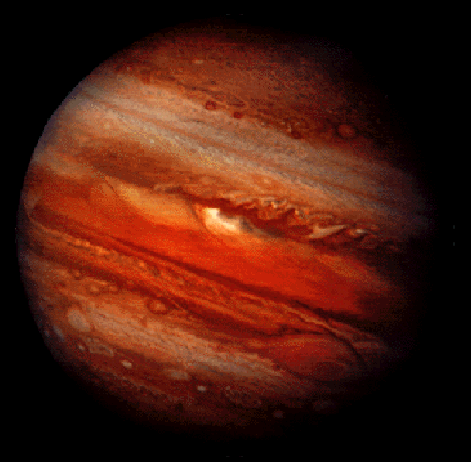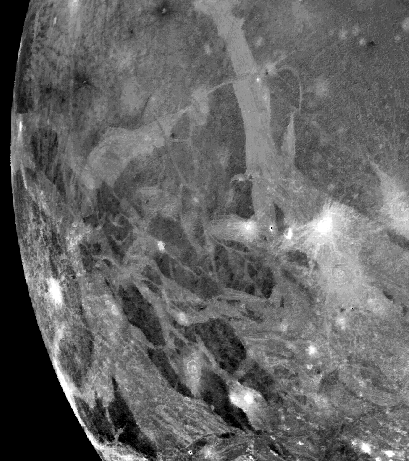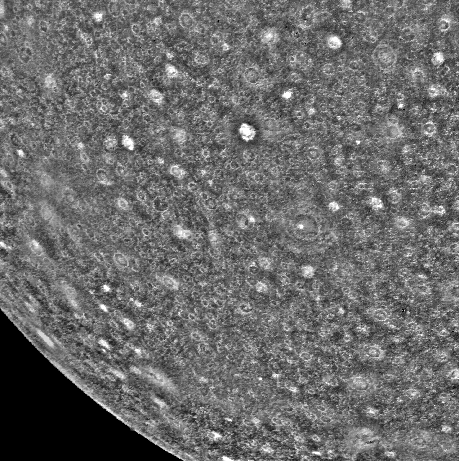 |
| Jupiter |
 |
| The four outter planets: Jupiter, Saturn, Uranus, and Neptune are the four outter planets which called the gas giant. These planets are alot bigger than the inner planet. They make out of mostly gasses. they have no solid surfaces - their atmospheres blend smoothly into the denser layers of their interiors, very depp beneath the outer layers. |
| This is a real images capture by the voyage. Click to view it large |
| Jupiter - A giant amoung giants |
| Like the sun, Jupiter is made primarily of hydrogen and helium. the outer part of Jupiter's atmosphere is made off layered clouds of water, mathane, and ammonia. The beautiful colors in the image are probably due to trace amounts of organic compoungs. another striking feature of Jupiter is the Great red Spot, which is a long-lasting storm system that has a diameter of about i and a half times that of earth! At a depth of about 10,000 km, the pressure is high enough to change hydrogen gas into a liquid. Deeper still, the pressure changes the liquid hydrogen into a teallic liquid state. Unlike most planets, Jupiter radiates much more heat into space than it receives from the sun. This is because heat is continuously transported from Jupiter’s interior to its outer atmospheric layers, where it is radiates in to space. |
| Jupiter's 16 moons |
 |
 |
 |
 |
| Jupiter has a total of 16 known moons. The four largest – Ganymede, Callisto, Io, and Europa – were discovered in 1610 by Galileo and are know as the Galilean satellites. The largest moon, Ganymede, is even larger than the planet Mercury! The Ganymede satellites are probably capture asteroids. Moving outward from Jupiter, the first Galilean satellite is Io, a truly bizarre world. Io is caught in a gravitational tug of war between Jupiter and Io’s nearest neighbors, the moon Europa. This constant tugging stretches Io a little, causing it to heat up. Because of this, Io is the most volcanically active body in the solar system! |
| Written by Qiliang Huang |